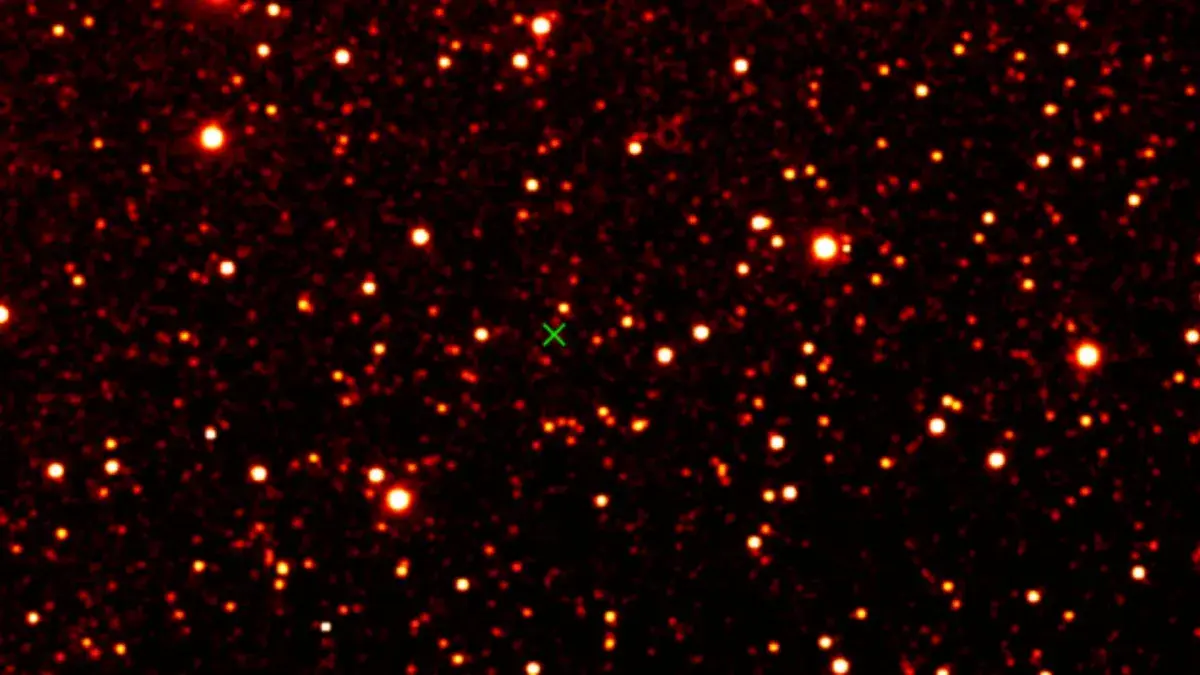Copyright Newsweek

A Harvard University professor has said 3I/ATLAS, a comet shrouded in controversy, experienced a sudden "nongravitational" acceleration while passing around the sun, which he believes adds to other potential evidence that 3I/ATLAS is "alien technology." Abraham "Avi" Loeb, a professor of science and the director of the Institute for Theory and Computation at Harvard, has become well-known for his controversial views on the comet. Recently, he wrote in an article on Medium that the Manhattan-size 3I/ATLAS accelerated when it reached its closest point to the sun. Why It Matters Since its discovery on July 1, 3I/ATLAS has sparked debate. Some, including Loeb, hold the view that the comet has various abnormalities that suggest it is not natural. Others firmly disagree, arguing that it is simply an interstellar comet—which is still a significant discovery as it is only the third of its kind to be spotted. What To Know Loeb told Newsweek that on Thursday night, he calculated that 3I/ATLAS "should have lost at least 10 percent of its mass in order to get this nongravitational acceleration out of outgassing." This means that "we should see a dense cloud of gas around it in November and December," he added. Loeb believed it would be possible for the European Space Agency (ESA)'s Jupiter Icy Moons Explorer, or Juice, spacecraft to see its potential mass loss in the first week of November, and for other ground-based telescopes to see it on December 19—when 3I/ATLAS is closest to Earth. "If we do not observe a dense cloud of gas around it in December, then cometary evaporation is not the explanation of its nongravitational acceleration," he said. "Instead, it might constitute a technological signature of a propulsion system." Other experts are not convinced. Darryl Seligman, a professor in the physics and astronomy department at Michigan State University, told Newsweek that comets "have nongravitational accelerations all the time." He added that scientists "routinely measure" nongravitational accelerations of comets, and that it is "almost strange to imagine a comet without a nongravitational acceleration, although they are very subtle and difficult to measure." Seligman said that comets are "actively loosing material." He added that by "blowing gas off of their surfaces, there are basically rocket-like recoils that make nongravitational accelerations." This means that nongravitational accelerations can be used to "infer outgassing or mass loss," he said. The first interstellar object discovered, 1I/`Oumuamua, was found to have nongravitational acceleration and "no dust comae," Seligman said. He added that there are also objects in the near-Earth environment called "dark comets" that "don't have apparent tails but have comet-like nongravitational accelerations." When asked how he would respond to those who say 3I/ATLAS is a natural comet, Loeb said, "Scientific truth is not decided by authority or popularity but by attention to data." What People Are Saying Abraham "Avi" Loeb, a professor of science and the director of the Institute for Theory and Computation at Harvard University, wrote on Medium: "By the date of its perihelion, 3I/ATLAS displayed the first evidence of a nongravitational acceleration. ... The nongravitational acceleration was measured at the perihelion distance of 1.36 times the Earth-sun separation (defined as an astronomical unit or `au’), equivalent to 203 million kilometers. "It had two components in the orbital plane of 3I/ATLAS: radial acceleration away from the sun of 135 kilometers (=9x10^{-7}au) per day squared; transverse acceleration relative to the sun’s direction of 60 kilometers (=4x10^{-7}au) per day squared. "If 3I/ATLAS is propelled by the rocket effect of ejected gas, then momentum conservation implies that the object would lose half its mass over a characteristic timescale equal to the ejection speed divided by the measured nongravitational acceleration." Megan Schwamb, a professor of planetary science at Queen's University Belfast in Northern Ireland, told Newsweek: "If there is an increase in the rate of volatile ices that are sublimating off the surface of the comet, then the 3I/ATLAS would be observed to be speeding up. We see this effect in long-period and short-period comets. This happened with 'Omumuamua. Spitzer observations detected as deviation in its orbit caused by the nongravitational accelerations due to the suspected outgassing of some volatile ice." She added: "There is a significant amount of peer-reviewed literature of the data collected after 3I/ATLAS was discovered and as it has continued to move closer to the sun. The analysis of these efforts from many astronomers around the globe show that to the best of our knowledge, 3I/ATLAS is consistent with having a natural origin. Its properties to date are consistent with it being an icy planetesimal that formed around another star in the galaxy and was later gravitational scattered out of its home planetary system to traverse through the galaxy until it felt our sun's gravitational potential. There is no evidence to date to point toward 3I/ATLAS being an alien spacecraft at this time. … "There may be potential compositional differences in 3I/ATLAS compared to comets in our solar system, but the theory that 3I/ATLAS formed around another star that has a different composition to the sun and therefore different properties within the planet-forming disk are still consistent with the observations." What Happens Next 3I/ATLAS is expected to be visible to ESA's Juice spacecraft in the first week of November and to ground-based telescopes on December 19.



